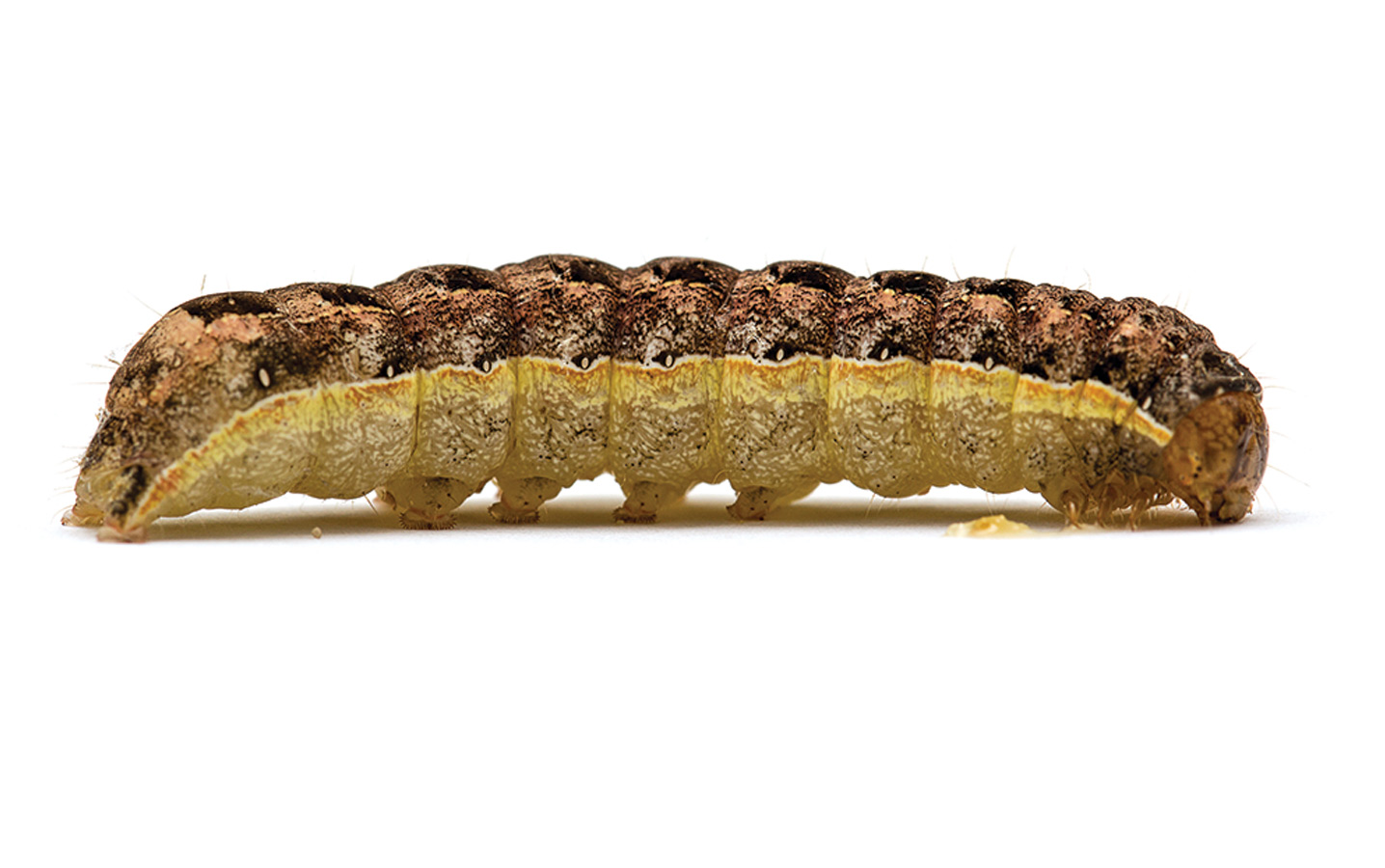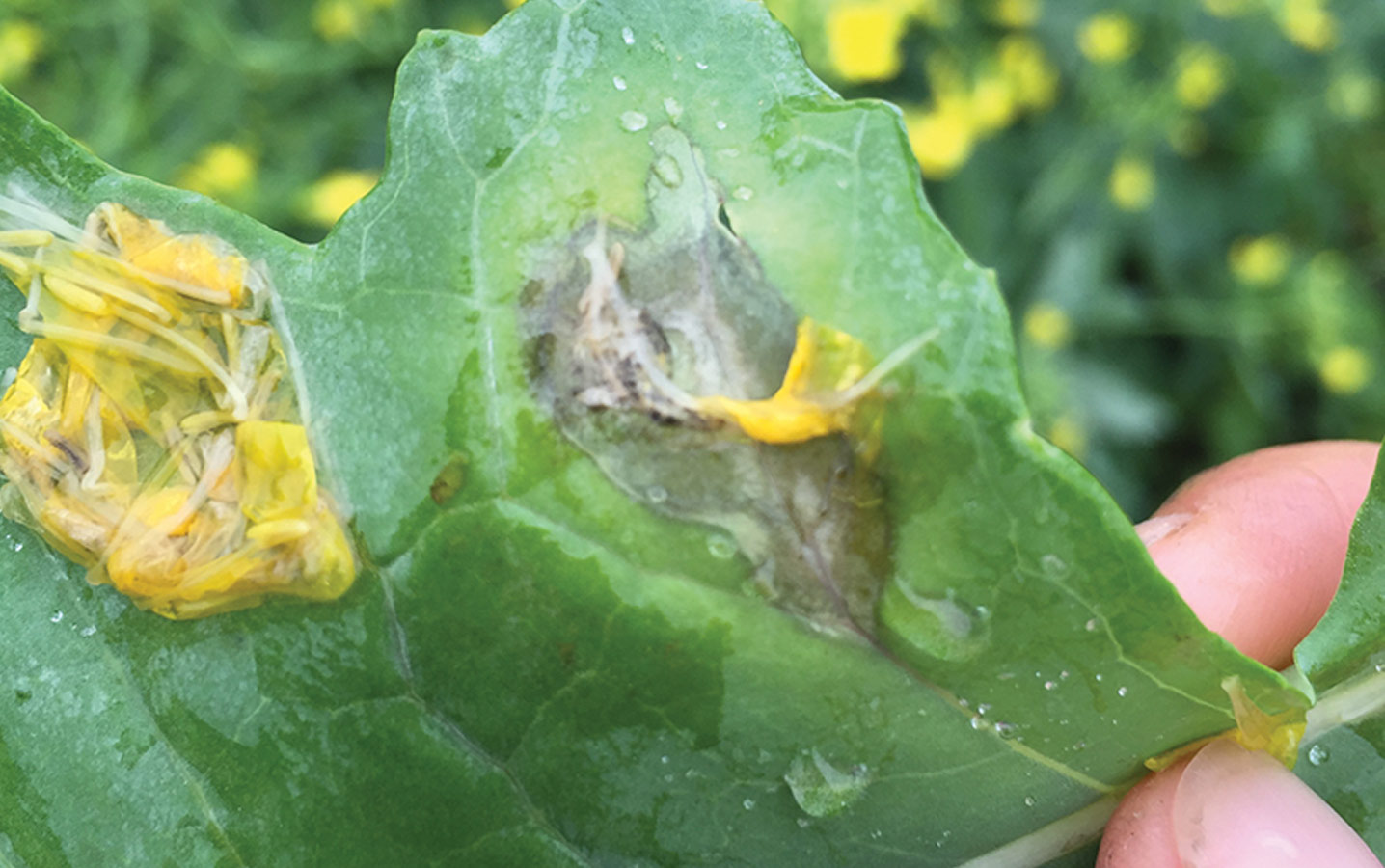Science Edition 2016—Key Result: The southeast Peace region has the highest intensity of canola acres and short canola rotations in the western Canadian Prairies. However, this study suggests that this may not be the best choice for growers in terms of long term yield, cropping system sustainability, soil moisture use, root health and economics. Project Title, Principal...
Read More 
Science Edition 2016—Key result: The current system for monitoring potential bertha armyworm outbreaks is based on a pheromone trap network developed in the 1970s (Steck et al. 1979) and improved in the 1980s (Struble et al. 1984). This study tested the efficiency of this system in the context of current canola production and determined the monitoring and...
Read More Science Edition 2016—
Brent Lensen offered two canola fields for a study measuring canola harvest loss. His losses were lower than study’s average – possibly due to his 3-mph combine ground speed.
Science Edition 2016—Key result: Seeding rates should be established based on 1,000-seed weight, using an on-line seeding rate calculator or on-line apps. Project title, Principal investigator: “Seed size and seeding rate effects on canola yield and quality,” Neil Harker, Agriculture and Agri-Food Canada Lacombe Funding: Alberta Canola, MCGA, SaskCanola, CCC, AAFC, GF2 Recent surveys indicate that approximately...
Read More 
Science Edition 2016—Key Result: Sclerotinia stem rot, caused by Sclerotinia sclerotiorum, is commonly managed by routine application of fungicides, typically without any indication of disease risk. Through this study, a quantitative polymerase chain reaction (qPCR)-based assay was developed to measure S. sclerotiorum DNA in canola petals, enabling rapid and accurate estimates of infestation levels when timely fungicide...
Read More





